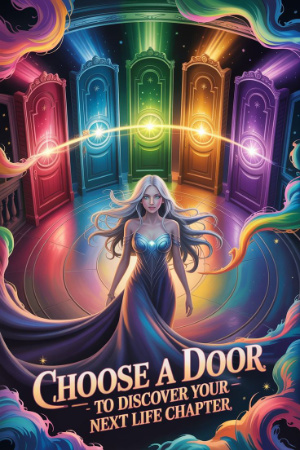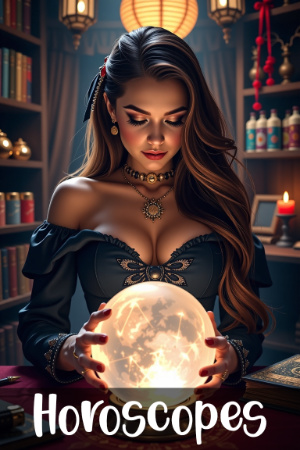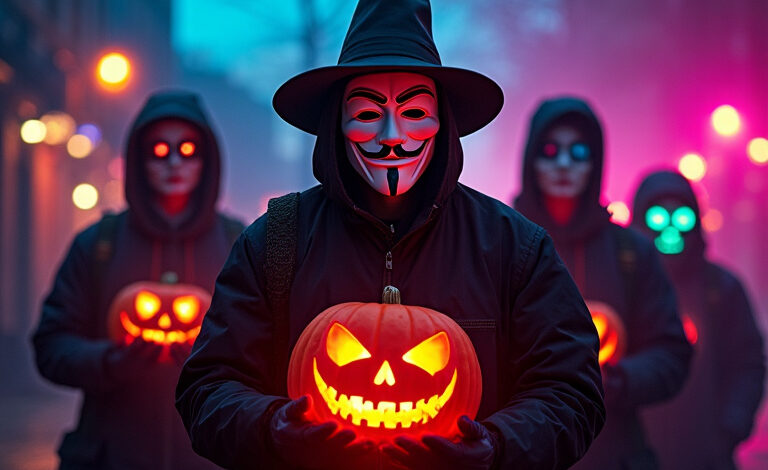
Halloween is a holiday that has become synonymous with spooky costumes, carved pumpkins, and trick-or-treating. While many people in countries like the United States associate Halloween with candy and haunted houses, this time of year holds much deeper significance across the world. What many don’t realize is that Halloween has roots in ancient traditions, and different cultures have their own unique ways of celebrating. From honoring the dead to ushering in the colder months, the customs surrounding Halloween vary widely from country to country.
The essence of Halloween goes beyond the thrill of being frightened; it’s often about paying respects to those who have passed, connecting with the spiritual realm, and marking the changing of seasons. While it may look different depending on where you are, the idea of coming together, whether to celebrate life or honor death, is something that transcends cultures. What started as a pagan festival has now evolved into a global celebration with countless interpretations.
In this piece, we’ll take a trip around the world to explore the various cultural Halloween traditions. From Latin America’s Dia de los Muertos to Ireland’s Samhain, you’ll find that Halloween isn’t just about ghosts and goblins—it’s about honoring ancient customs, embracing community, and connecting with the spiritual world in unique and meaningful ways.
Cultural Halloween Traditions from Around the World
Dia de los Muertos (Mexico)
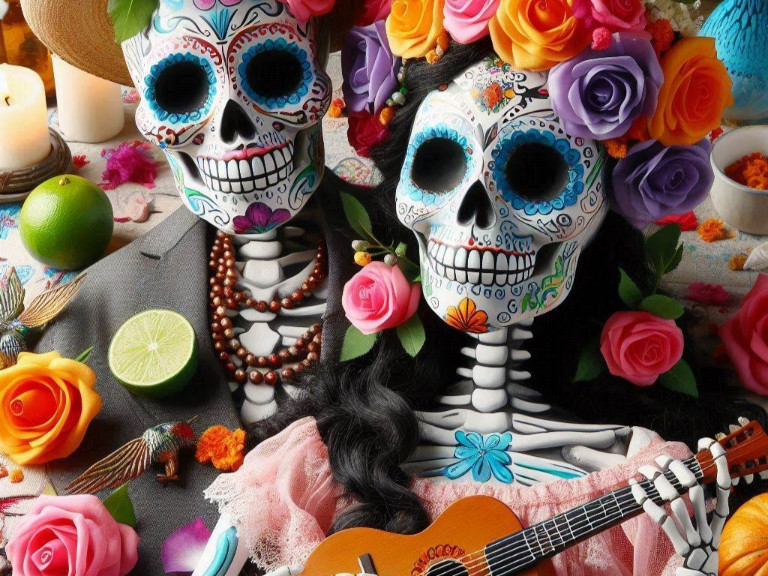
In Mexico, Halloween coincides with Dia de los Muertos, or the Day of the Dead, a beautiful and deeply meaningful celebration. Unlike the spooky undertones of Halloween, Dia de los Muertos is a time to honor and remember loved ones who have passed. Altars, known as ofrendas, are set up in homes, decorated with marigolds, candles, and photos of the deceased. Families place offerings such as favorite foods and drinks to welcome the spirits back for a brief reunion. Parades with vibrant skeleton costumes, music, and dance fill the streets, making this holiday a colorful and lively event.
The belief is that during this time, the boundary between the living and the dead is thinner, allowing departed souls to visit the world of the living. Far from a sad occasion, Dia de los Muertos celebrates the lives of those who are no longer with us, blending indigenous Aztec traditions with Catholicism. It’s a holiday rich in symbolism, with sugar skulls and face painting often representing the beauty and fragility of life. This tradition has also inspired Halloween celebrations beyond Mexico, particularly in areas with large Mexican communities.
Samhain (Ireland and Scotland)
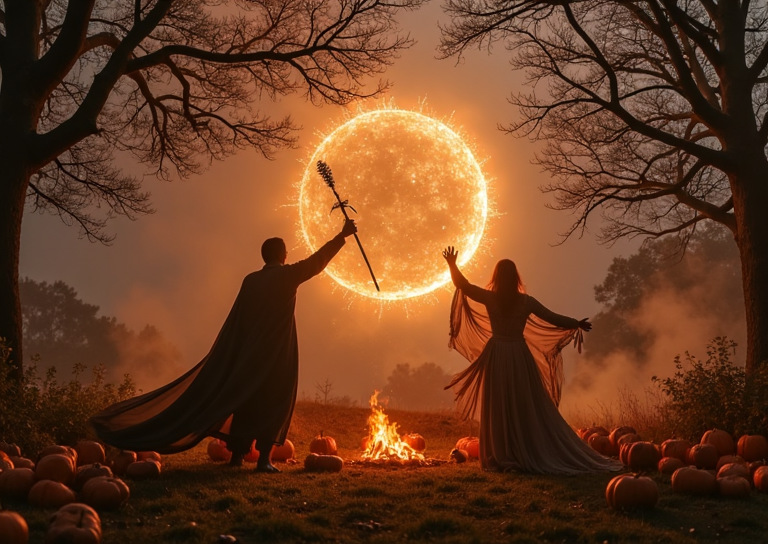
Samhain, pronounced “sow-in,” is an ancient Celtic festival that marks the end of the harvest season and the beginning of winter. This tradition, primarily celebrated in Ireland and Scotland, is one of the oldest known influences on modern Halloween. During Samhain, it was believed that the veil between the living and the spirit world was at its thinnest, allowing spirits, both good and mischievous, to pass through. To ward off malevolent spirits, people would light bonfires and wear costumes, often of animal heads and skins.
The tradition of carving turnips, which has now evolved into pumpkin carving in countries like the United States, also originates from Samhain. In Irish folklore, carved turnips, known as “jack-o’-lanterns,” were placed in windows to scare away evil spirits. While Samhain was later Christianized as All Saints’ Day, many of its customs remain alive in modern Halloween practices, making it a celebration of both the changing seasons and the supernatural.
Ognissanti (Italy)
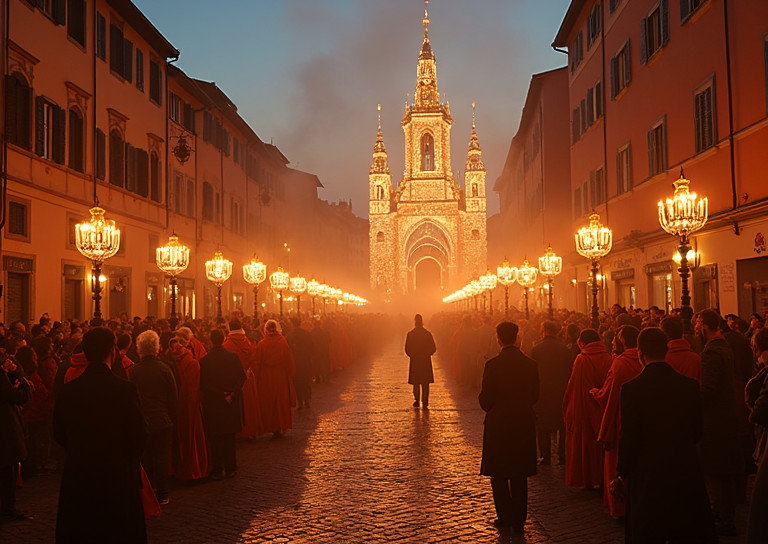
In Italy, Halloween takes on a quieter, more somber tone with the celebration of Ognissanti, or All Saints’ Day, on November 1st. While Halloween itself isn’t widely celebrated in Italy, the days surrounding it are deeply important in the Catholic tradition. Italians visit the graves of loved ones to leave flowers and candles, honoring the saints and remembering the dead. It’s a time of reflection and reverence, far from the spooky celebrations associated with Halloween in other parts of the world.
In some regions of Italy, there are ancient traditions where people leave out food for wandering spirits, similar to the offerings seen in Dia de los Muertos. Though trick-or-treating and costume parties are becoming more popular in recent years, especially in larger cities, the focus in Italy remains on paying respects to those who have passed. Ognissanti is a time for families to gather, attend church services, and visit cemeteries, connecting with their ancestors in a peaceful, respectful way.
Kawasaki Halloween Parade (Japan)
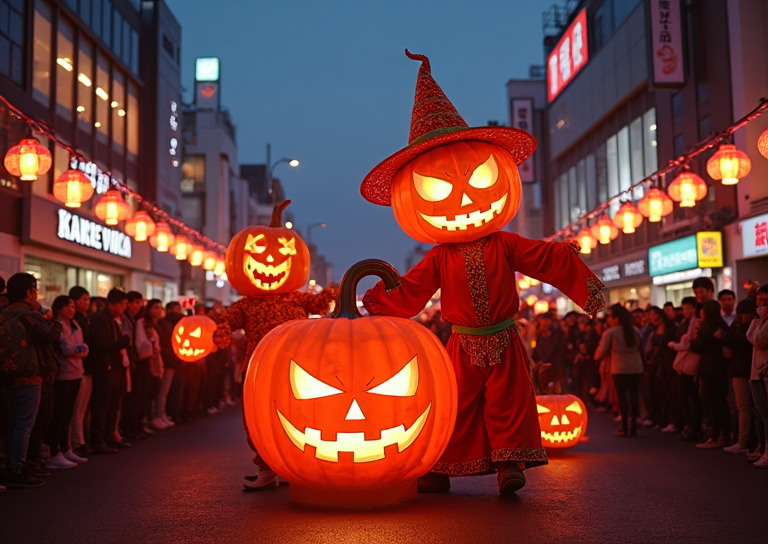
In Japan, Halloween has only recently gained popularity, but it has already developed its own unique twist. The Kawasaki Halloween Parade, held annually in late October, is one of the biggest Halloween events in the country. Thousands of participants dress in elaborate, often highly creative costumes, ranging from traditional monsters to anime characters and everything in between. Japan’s love for cosplay has turned Halloween into a colorful, fun, and community-driven event.
Though Halloween in Japan is less about spirits and more about dressing up and enjoying the festive atmosphere, you can still find nods to traditional Japanese ghost stories. Many Halloween events feature haunted houses inspired by Japanese folklore, adding a local flavor to the celebrations. As Japan continues to embrace Halloween, it blends Western influences with its own cultural traditions, creating a celebration that feels uniquely Japanese while still honoring the fun and whimsy of the holiday.
Halloween (United States of America)
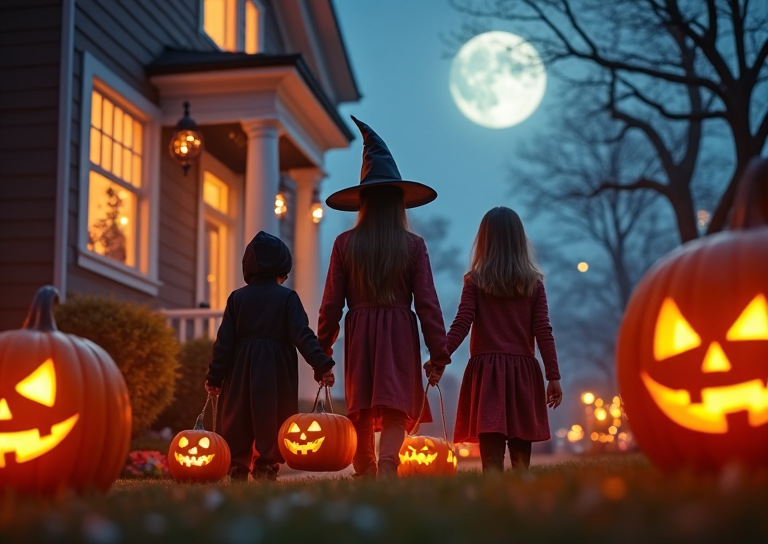
Halloween in the United States is a vibrant and colorful celebration that combines elements of ancient Celtic traditions, colonial customs, and modern-day pop culture. One of the most iconic Halloween traditions in the U.S. is trick-or-treating, where children dress up in costumes and go door-to-door collecting candy. Popular costumes often include superheroes, movie characters, and scary creatures like ghosts, witches, and zombies.
Another popular Halloween activity is carving pumpkins into jack-o’-lanterns, which are traditionally lit from within with a candle. Jack-o’-lanterns are believed to ward off evil spirits, and they are a common sight on porches and lawns throughout the country. Halloween parties are also a popular way to celebrate the holiday, with people often dressing up in costumes, playing games, and enjoying spooky-themed food and drinks.
While Halloween in the United States is primarily a fun and festive occasion, it also has a darker side. The holiday is associated with the Celtic tradition of Samhain, which marked the end of the harvest season and the beginning of winter. Some people believe that the veil between the living and the dead is thinner on Halloween night, and that ghosts and other supernatural beings are more active.
Día de las Ñatitas (Bolivia)
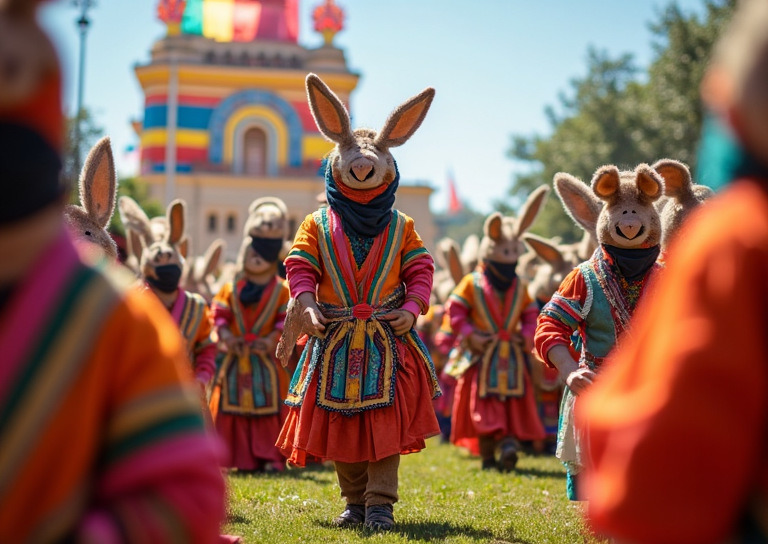
In Bolivia, Halloween coincides with the unique tradition of Día de las Ñatitas, or “Day of the Skulls,” held on November 8th. Far from the typical Halloween imagery of spooky skeletons, this tradition honors human skulls, or ñatitas, that families keep in their homes as a way to remember and connect with their deceased loved ones. These skulls are not just symbolic; they are often the actual remains of family members, ancestors, or even strangers who have passed. The ñatitas are believed to provide protection, guidance, and luck to the families who care for them.
During Día de las Ñatitas, families adorn the skulls with flowers, cigarettes, and even sunglasses, treating them almost like honored guests. They are taken to cemeteries or local churches where they are blessed and celebrated. This tradition blends indigenous beliefs with Catholic practices, where skulls are seen as powerful symbols of the afterlife. Unlike the more fearful association with death in other cultures, Día de las Ñatitas reflects a comforting and close relationship with the spirits of the dead.
Pangangaluluwa (Philippines)
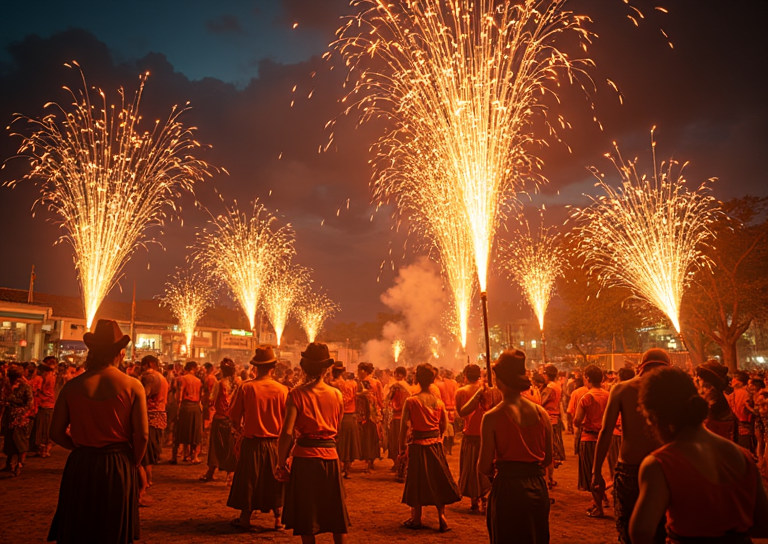
In the Philippines, Halloween is celebrated through the ancient tradition of Pangangaluluwa, a practice similar to caroling or trick-or-treating, but with a spiritual twist. On the eve of All Saints’ Day, groups of people, often children, go from house to house singing songs and offering prayers for the souls of the dead. In return, they receive small tokens or offerings from the households, such as food or money, which are said to help the souls of the departed find peace.
Pangangaluluwa is rooted in the belief that the dead need prayers and offerings to help them in the afterlife, particularly those who may be stuck in purgatory. While this tradition has faded in many parts of the country, efforts are being made to revive it as an alternative to Westernized Halloween customs. In some rural areas, reenactments of this ritual are still performed, reminding people of the importance of praying for the dead during this time of year.
Fête de la Toussaint (France)
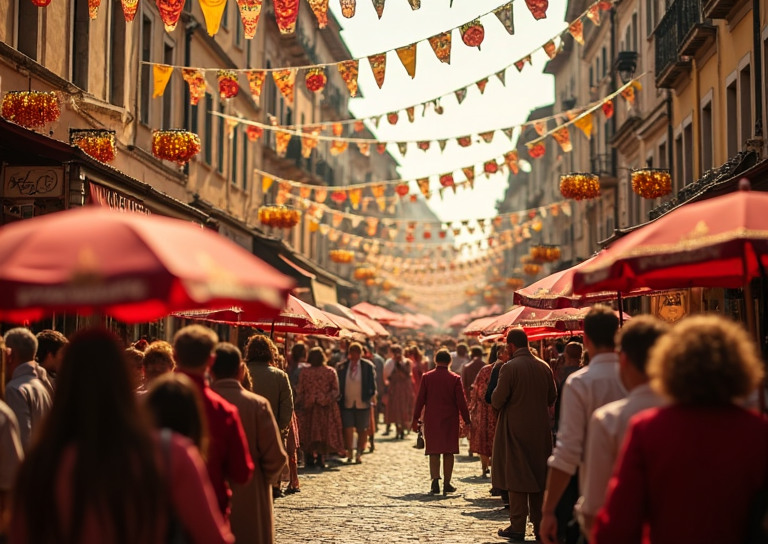
In France, Halloween has a relatively low-key presence, with the country placing greater emphasis on La Toussaint, or All Saints’ Day, on November 1st. While Halloween costumes and parties have started to gain traction in recent years, the traditional focus during this time is on honoring the deceased. Families visit cemeteries to clean and decorate the graves of loved ones with fresh flowers, particularly chrysanthemums, which are considered the symbol of mourning in France.
It’s a solemn and reflective holiday, with many families attending church services and spending quiet time remembering those who have passed. Unlike the more festive or spooky Halloween celebrations in other parts of the world, La Toussaint is a day of reverence and respect for the dead, where French people come together in a moment of collective remembrance. This more subdued tradition highlights the cultural difference in how death and the afterlife are viewed, with an emphasis on quiet reflection rather than celebration.
Chuseok (South Korea)

While South Korea doesn’t celebrate Halloween in the traditional sense, the festival of Chuseok bears a strong resemblance to some of the themes associated with Halloween, particularly in honoring ancestors and remembering the dead. Chuseok is a major harvest festival celebrated in late September or early October, depending on the lunar calendar. Families travel to their ancestral homes to pay respect to their ancestors through a ritual called Charye, where offerings of food, drink, and rice cakes are placed on an altar.
During Chuseok, families also visit the graves of their ancestors to clean the burial sites and leave offerings. This practice of ancestor worship is central to the holiday, as it’s believed that the spirits of the departed play a crucial role in the prosperity of the family. While Chuseok lacks the spooky elements of Western Halloween, its focus on connecting with those who have passed and the communal spirit of the celebration shares a similar reverence for the cycle of life and death.
Guy Fawkes Night (United Kingdom)
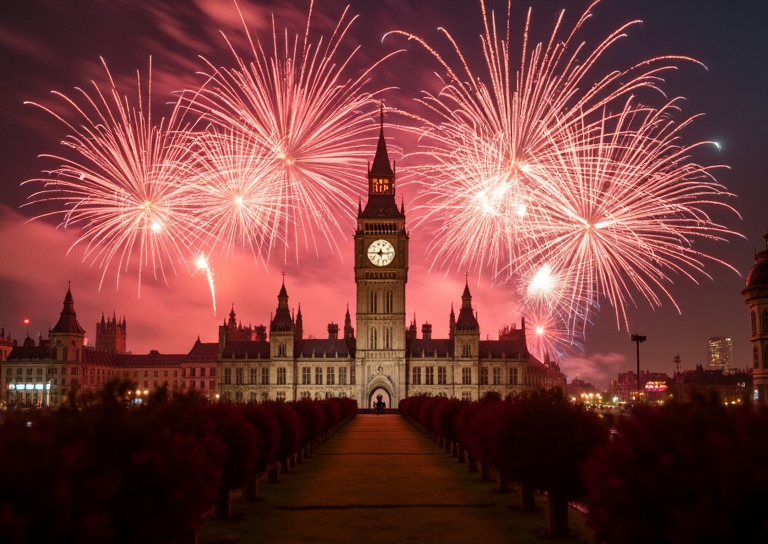
In the United Kingdom, Halloween celebrations often overlap with preparations for Guy Fawkes Night, also known as Bonfire Night, which takes place on November 5th. While not directly related to Halloween, the themes of fire, rebellion, and celebration create a festive atmosphere during this time of year. Guy Fawkes Night commemorates the failed Gunpowder Plot of 1605, when a group of Catholic conspirators, including Guy Fawkes, attempted to blow up the Houses of Parliament.
On Guy Fawkes Night, large bonfires are lit across the country, and effigies of Guy Fawkes are burned in remembrance of the event. Fireworks displays are also common, adding to the spectacle. While the holiday originally had political and historical significance, it has taken on a more playful tone in modern times. Children create homemade “Guys” (effigies) and ask for “a penny for the Guy,” similar to trick-or-treating. The proximity of Halloween and Guy Fawkes Night has led to a blending of traditions, with costumes and spooky festivities becoming part of the wider celebration.
Dzie? Zaduszny (Poland)
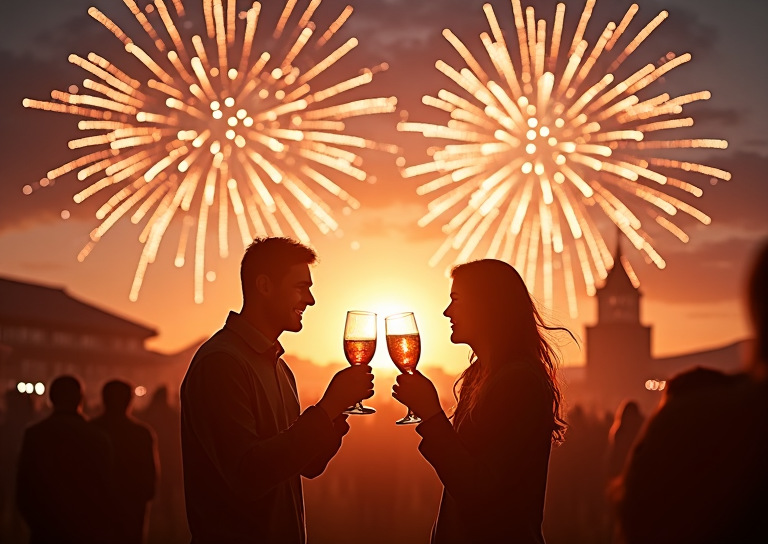
In Poland, Halloween is less of a commercial event, but the days immediately following it hold deep spiritual significance. Dzie? Zaduszny, or All Souls’ Day, is celebrated on November 2nd and is a day of remembrance for the departed. Much like La Toussaint in France, this holiday focuses on visiting cemeteries to clean and decorate the graves of loved ones with flowers and candles. The sight of thousands of glowing candles in Polish cemeteries during this time is both beautiful and moving, symbolizing the light that guides the souls of the dead.
Dzie? Zaduszny is a quieter, more reflective holiday compared to the festive atmosphere of Halloween in other countries. Families attend church services and offer prayers for their deceased relatives, hoping to help them on their journey in the afterlife. While the focus is on spiritual reflection, the holiday also serves as a time for families to come together and reconnect, making it a meaningful and deeply rooted tradition in Polish culture.
Hop-tu-Naa (Isle of Man)

On the Isle of Man, located between England and Ireland, Halloween is celebrated with a tradition called Hop-tu-Naa, which has roots older than Halloween itself. Celebrated on October 31st, Hop-tu-Naa is considered the Celtic New Year and shares many similarities with Samhain, the ancient festival that marks the end of the harvest and the beginning of winter. Instead of pumpkins, people carve turnip lanterns, called “moots,” and place them outside their homes to ward off evil spirits.
Children go door-to-door singing traditional Hop-tu-Naa songs, often carrying their carved turnips, in a custom that resembles trick-or-treating. They receive small treats or money in exchange for their songs. The night also involves storytelling, with a focus on folklore and tales about mythical creatures, witches, and mischievous fairies that are believed to come out during this time of year. Hop-tu-Naa is a blend of ancient tradition and modern celebration, keeping the island’s rich folklore alive while adding a festive atmosphere to the darkening days of autumn.
55 Halloween Superstitions from Around the World
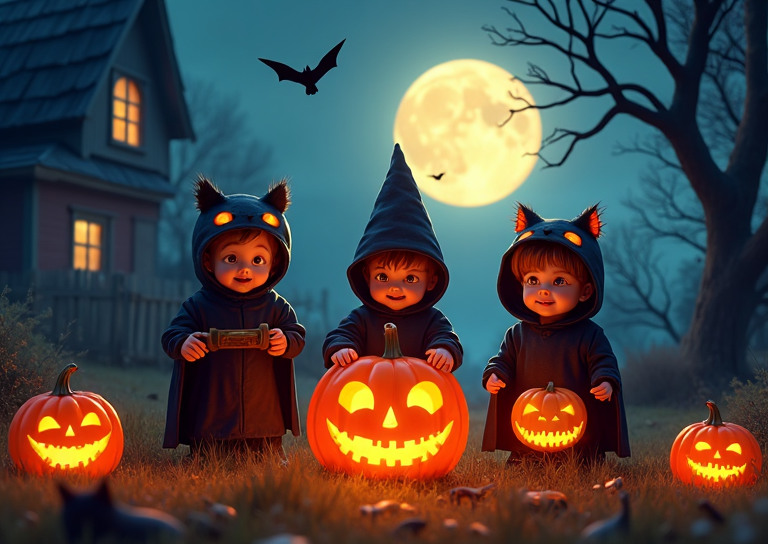
1. Walking Under Ladders (Universal): It’s considered unlucky to walk under a ladder, as it’s said to form a triangle with the ground and the ladder, symbolizing a gallows.
2. Breaking a Mirror (Universal): Breaking a mirror is believed to bring seven years of bad luck.
3. Black Cats (Western Cultures): Black cats are often associated with bad luck, especially if one crosses your path.
4. Walking Under Ladders (Universal): It’s considered unlucky to walk under a ladder, as it’s said to form a triangle with the ground and the ladder, symbolizing a gallows.
5. Breaking a Mirror (Universal): Breaking a mirror is believed to bring seven years of bad luck.
6. Black Cats (Western Cultures): Black cats are often associated with bad luck, especially if one crosses your path.
7. Knocking on Wood (Western Cultures): Knocking on wood is a way to ward off bad luck after saying something positive.
8. Salt Spilled (Western Cultures): Spilling salt is said to bring bad luck.
9. Crows (Western Cultures): Crows are often seen as omens of death.
10. Owls (Western Cultures): Owls are often associated with death or misfortune.
11. Friday the 13th (Western Cultures): The combination of Friday and the number 13 is considered unlucky in many Western cultures.
12. Stepping on a Crack (Western Cultures): Stepping on a crack in the sidewalk is said to break your mother’s back.
13. Opening an Umbrella Indoors (Western Cultures): Opening an umbrella indoors is said to bring bad luck.
14. Whistling Indoors (Western Cultures): Whistling indoors is said to bring bad luck, particularly for sailors.
15. Putting Shoes on a Table (Western Cultures): Putting shoes on a table is considered bad luck.
16. Leaving Shoes Untied (Western Cultures): Leaving shoes untied is said to bring bad luck.
17. Leaving a Knife Unsheathed (Western Cultures): Leaving a knife unsheathed is said to bring bad luck.
18. Tripping (Western Cultures): Tripping is often seen as a sign of good luck.
19. Finding a Four-Leaf Clover (Western Cultures): Finding a four-leaf clover is considered extremely lucky.
20. Jinx (Western Cultures): Saying “jinx” after someone says something and then repeating it is a way to cancel out the jinx.
21. Touching Wood (Western Cultures): Touching wood is another way to ward off bad luck after saying something positive.
22. Knocking on Wood (Western Cultures): Knocking on wood is a way to ward off bad luck after saying something positive.
23. Salt Spilled (Western Cultures): Spilling salt is said to bring bad luck.
24. Crows (Western Cultures): Crows are often seen as omens of death.
25. Owls (Western Cultures): Owls are often associated with death or misfortune.
26. Friday the 13th (Western Cultures): The combination of Friday and the number 13 is considered unlucky in many Western cultures.
27. Stepping on a Crack (Western Cultures): Stepping on a crack in the sidewalk is said to break your mother’s back.
28. Opening an Umbrella Indoors (Western Cultures): Opening an umbrella indoors is said to bring bad luck.
29. Whistling Indoors (Western Cultures): Whistling indoors is said to bring bad luck, particularly for sailors.
30. Putting Shoes on a Table (Western Cultures): Putting shoes on a table is considered bad luck.
31. Leaving Shoes Untied (Western Cultures): Leaving shoes untied is said to bring bad luck.
32. Leaving a Knife Unsheathed (Western Cultures): Leaving a knife unsheathed is said to bring bad luck.
33. Tripping (Western Cultures): Tripping is often seen as a sign of good luck.
34. Finding a Four-Leaf Clover (Western Cultures): Finding a four-leaf clover is considered extremely lucky.
35. Jinx (Western Cultures): Saying “jinx” after someone says something and then repeating it is a way to cancel out the jinx.
36. Touching Wood (Western Cultures): Touching wood is another way to ward off bad luck after saying something positive.
37. Knocking on Wood (Western Cultures): Knocking on wood is a way to ward off bad luck after saying something positive.
38. Salt Spilled (Western Cultures): Spilling salt is said to bring bad luck.
39. Crows (Western Cultures): Crows are often seen as omens of death.
41. Owls (Western Cultures): Owls are often associated with death or misfortune.
42. Friday the 13th (Western Cultures): The combination of Friday and the number 13 is considered unlucky in many Western cultures.
43. Stepping on a Crack (Western Cultures): Stepping on a crack in the sidewalk is said to break your mother’s back.
44. Opening an Umbrella Indoors (Western Cultures): Opening an umbrella indoors is said to bring bad luck.
45. Whistling Indoors (Western Cultures): Whistling indoors is said to bring bad luck, particularly for sailors.
46. Putting Shoes on a Table (Western Cultures): Putting shoes on a table is considered bad luck.
47. Leaving Shoes Untied (Western Cultures): Leaving shoes untied is said to bring bad luck.
48. Leaving a Knife Unsheathed (Western Cultures): Leaving a knife unsheathed is said to bring bad luck.
49. Tripping (Western Cultures): Tripping is often seen as a sign of good luck.
50. Finding a Four-Leaf Clover (Western Cultures): Finding a four-leaf clover is considered extremely lucky.
51. Ghostly Appearances (Various Cultures): In many cultures, it’s believed that ghosts can appear on Halloween night.
52. Witches’ Sabbats (Pagan Traditions): Witches are said to gather for their Sabbats on Halloween night.
53. Offerings to the Dead (Asian Cultures): In many Asian cultures, people make offerings to their ancestors on Halloween to appease their spirits.
54. Bonfires (Celtic Traditions): Bonfires are lit to ward off evil spirits and celebrate the harvest season.
55. Masks (Various Cultures): Masks are often worn to disguise oneself from evil spirits or to represent ancestors.
Final Musing
From ancient Celtic festivals to modern-day parades in Japan, Halloween has evolved into a global celebration with a wide range of interpretations. What ties these different traditions together is the shared human experience of acknowledging both life and death, whether through remembering ancestors, honoring saints, or simply enjoying a night of spooky fun. While the customs may differ, the spirit of community and connection is a common thread.
As we celebrate Halloween, whether by dressing up in costumes, lighting candles for our ancestors, or dancing in the streets, it’s worth taking a moment to reflect on the diverse ways this holiday is honored around the world. Each tradition brings something unique to the table, reminding us that Halloween is much more than just a night of tricks and treats—it’s a celebration of history, culture, and our shared humanity.



